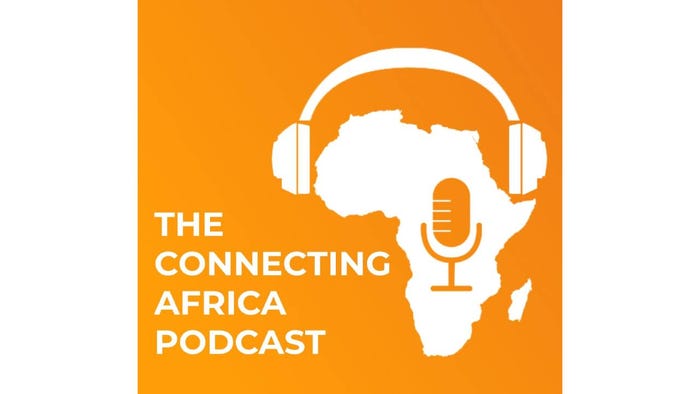Sub-Saharan Africa remains the least connected region globallySub-Saharan Africa remains the least connected region globally
Less than half of adults in sub-Saharan Africa are using mobile Internet services, and the region still has the largest coverage and usage gaps, according to the GSMA's 2024 State of Mobile Internet Connectivity report.
_(1).jpg?width=1280&auto=webp&quality=95&format=jpg&disable=upscale)
Sub-Saharan Africa is still the least connected region globally, with only 46% of the adult population using mobile Internet services.
That is according to the latest GSMA State of Mobile Internet Connectivity 2024 report which found that 71% of adults globally (or around 4 billion individuals aged 18+) were using mobile Internet services.
In absolute terms, only 27% of the total population of sub-Saharan Africa is using mobile Internet services, but this includes those under 18 (including infants) who are less likely to have a mobile subscription and skews the data for a region with such a young population.
The new report found that 350 million people (4% of the global population) live in largely remote areas without mobile Internet networks – the coverage gap.
However, 3.1 billion people (39% of the global population) live within areas with mobile Internet coverage but do not use it – the usage gap.
This means the global usage gap is nine times the size of the coverage gap.
As in previous years, sub-Saharan Africa remains the region with the largest coverage and usage gaps, at 13% and 60% respectively.
In the Middle East and North Africa (MENA), 49% of the total population was using the mobile Internet (and 63% of adults) but there was a usage gap of 47% and a coverage gap of 4%.
.jpg?width=700&auto=webp&quality=80&disable=upscale)
(Source: GSMA Intelligence)
The GSMA said that while the proportion of the global population using mobile Internet on their own device continues to increase annually, the rate of user growth is slowing.
Another 160 million people started using mobile Internet last year, similar to 2022 levels but a drop from rates during 2015-2021 when more than 200 million new users were added each year.
.jpg?width=700&auto=webp&quality=80&disable=upscale)
(Source: GSMA Intelligence)
"The biggest challenge remains the usage gap. Getting these people online would be worth an estimated $3.5 trillion to the global economy during 2023-2030, with 90% of this impact benefiting low- and middle-income countries (LMICs)," the report's authors said.
The coverage gap predominantly exists in rural, poor and sparsely populated areas – often less developed, landlocked or small island developing states.
The International Monetary Fund (IMF) estimates that $418 billion is needed to build the infrastructure required to achieve universal mobile Internet access.
In Africa, connectivity was found to be the highest in Southern and Western Africa at around 30%, and the lowest in Central Africa at 19%. Central Africa also has the largest coverage gap, at 34%. Eastern Africa has the largest usage gap within the region, at 68%.
.jpg?width=700&auto=webp&quality=80&disable=upscale)
(Source: GSMA Intelligence)
John Giusti, chief regulatory officer at the GSMA, said that despite continued progress in expanding the reach of network infrastructure and in increasing mobile Internet adoption, significant digital divides remain.
"Although most users access mobile internet daily, their activities are often limited to just one or two activities, even though many express a desire to do more. This highlights persistent barriers to enabling meaningful connectivity, preventing users from getting online and getting the full benefits of the mobile internet," Giusti said in a statement.
Globally, the vast majority of people now access the Internet on a 4G or 5G smartphone, however, one in five are still using 3G smartphones or a feature phone.
This grows to almost two-thirds in sub-Saharan Africa and more than a third in MENA, limiting the range and depth of online and digital experience among users.
Barriers to Internet usage
For the unconnected in LMICs, device affordability and digital skills and literacy are the main barriers to mobile Internet adoption.
In these countries, entry-level Internet-enabled devices cost 18% of average monthly income, with this rising to 51% for the world's poorest 20%.
In sub-Saharan Africa, which accounts for a quarter of the global unconnected population, this rises to 99% of average monthly income for the region's poorest 20%.
For women in LMICs, the cost of an entry-level, Internet-enabled handset is 24% of monthly income, compared to 12% for men.
A lack of digital skills and literacy is the second-biggest barrier for those in sub-Saharan Africa.
The other established barriers to people using mobile Internet are a lack of relevant, localized content and services, concerns over safety and security, and limited access to additional critical infrastructure and services such as electricity.
"Collaboration among governments, international organisations and the mobile industry is essential to addressing barriers such as affordability, digital skills, and awareness of the mobile internet and its benefits. This effort must also focus on investing in local digital ecosystems and ensuring robust online safety frameworks," Giusti added.
The 2024 GSMA report was funded by the UK Foreign, Commonwealth and Development Office (FCDO) and the Swedish International Development Cooperation Agency (Sida) via the GSMA Mobile for Development Foundation.


_(1)_(1).jpg?width=700&auto=webp&quality=80&disable=upscale)
.jpg?width=700&auto=webp&quality=80&disable=upscale)
_(1).jpg?width=700&auto=webp&quality=80&disable=upscale)

.jpg?width=700&auto=webp&quality=80&disable=upscale)
.jpg?width=700&auto=webp&quality=80&disable=upscale)
_(1).jpg?width=700&auto=webp&quality=80&disable=upscale)
.jpg?width=700&auto=webp&quality=80&disable=upscale)

.jpg?width=700&auto=webp&quality=80&disable=upscale)